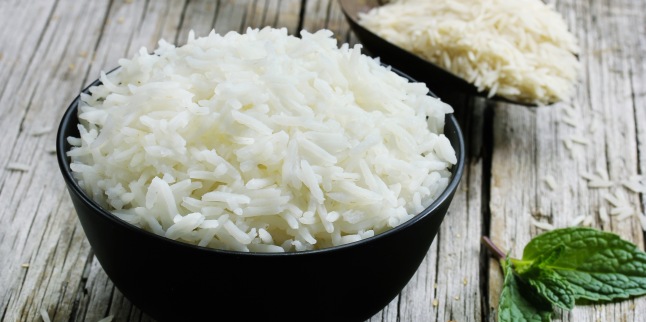How do you have to cook the rice in order not to get intoxicated with arsenic?

Arsenic is a toxic oligoelement, marked with the symbol As. It is usually related to other elements in chemical compounds. Arsenic is divided into two main categories: - Organic arsenic: mainly found in plant and animal tissues - Inorganic arsenic: found in rock and soil or dissolved in. This is the most toxic form. Arsenic is found in almost all foods and beverages, but is usually present only in small quantities. In contrast, relatively high levels are found in: - Contaminated drinking water: millions of people around the world are exposed to drinking water containing large amounts of inorganic arsenic.
This is most commonly found in South America and Asia. -: fish, shrimp, crustaceans and other seafood may contain significant amounts of organic arsenic, less toxic. However, certain types of algae may also contain inorganic arsenic. - Rice and rice-based foods: Rice accumulates more arsenic than other crops. It is practically the most important source of inorganic arsenic.
Arsenic is naturally present in water, soil and rocks, but its levels may be higher in some areas than in others. As a result of human activities, pollution with arsenic has increased. The main sources of arsenic pollution include the use of certain herbicides, preservatives, phosphatic fertilizers, industrial wastes, mining activities, coal burning. Arsenic often enters groundwater, which is heavily polluted in parts of the world. From groundwater, arsenic finds its way into fountains and other water sources that can be used to irrigate crops.
Paddy rice is particularly sensitive to arsenic contamination. High doses of arsenic are toxic, causing adverse symptoms and even death. Long-term ingestion of inorganic arsenic can cause various health problems and may increase the risk of chronic diseases such as: - Different types of cancer - Thickening or blocking of blood vessels (vascular disease) - - - Heart disease -. In addition, arsenic is toxic to nerve cells and can affect cerebral function. In children and adolescents, exposure to arsenic was associated with: - Loss and memory - Reduced intellectual performance and social skills.
How should rice be prepared to remove arsenic? For rice to be safe for consumption, it must be left in the water for 6-8 hours (overnight). Subsequently, rinse thoroughly with water until it becomes clear. Boil in a loose pot, with a ratio of a portion of rice and five parts of water. .
Source : sfatulmedicului.ro
Views : 3134
Popular Article
- (photo) Nude becomes art.
Posted: 2018-03-17, 9759 views.
- The harmful effects of air conditioning on the skin
Posted: 2017-06-08, 8469 views.
- 3 causes of dyed hair discoloration
Posted: 2017-06-15, 8350 views.
- Why early puberty occurs in girls: symptoms, favors, diagnosis and treatment
Posted: 2017-10-24, 8191 views.
- Good or bad skin treatments in the hot season
Posted: 2017-06-07, 7921 views.
Recommendations
- (photo) Nude becomes art.
Posted: 2018-03-17, 9759 views.
- The harmful effects of air conditioning on the skin
Posted: 2017-06-08, 8469 views.
- 3 causes of dyed hair discoloration
Posted: 2017-06-15, 8350 views.
- Good or bad skin treatments in the hot season
Posted: 2017-06-07, 7921 views.
- Risks of practicing sports on hot days
Posted: 2017-06-12, 7501 views.
 4 effective ingredients in the fight against acne.
4 effective ingredients in the fight against acne. How to get rid of hiccups fast
How to get rid of hiccups fast The wheat bran diet: the secret of lost pounds as if by magic
The wheat bran diet: the secret of lost pounds as if by magic The recipe that will sweeten your soul this weekend!
The recipe that will sweeten your soul this weekend!  Is it dangerous or not to refreeze meat after thawing it?
Is it dangerous or not to refreeze meat after thawing it?  The unusual sign of diabetes indicated by saliva.
The unusual sign of diabetes indicated by saliva. What to drink to boost your immune system.
What to drink to boost your immune system. 10 foods that help you never age.
10 foods that help you never age. What actually happens in your body if you drink a cup of coffee for breakfast
What actually happens in your body if you drink a cup of coffee for breakfast 5 surprising benefits of chia seeds
5 surprising benefits of chia seeds